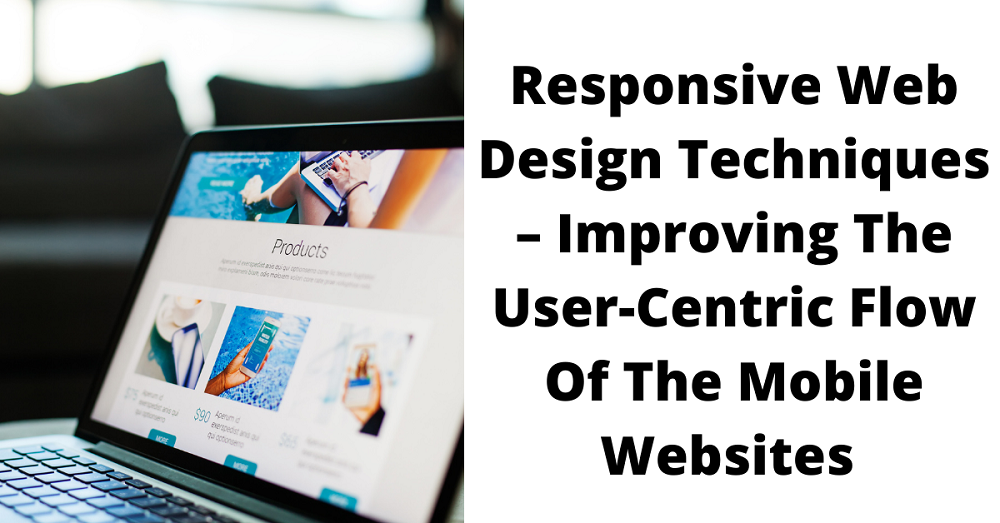Right now, unless your business has a responsive web design, you are seriously lagging behind. You will be way down in the competition and will miss out on some of the significant business opportunities. Previously people were stuck in front of the PC because they had nothing called a laptop or smartphone.
Now with advanced techniques used for manufacturing smartphones, you will hardly find people carrying their laptops with them. Everything from booking an appointment to checking out a business, they can cover it all with their smartphones. So, you need your business to reach that height. You want the website to be snugly fitting the small smartphone screen, and that?s what responsive design is all about.

Fitting all the screen sizes snugly:
When it is responsive design, it means the layout of the website will fit within the resolution of the screen perfectly. There will be just one website, which can brilliantly fit into the screens of not just smartphones, but laptops and PCs as well. So, no need to create different websites for different screen sizes any longer!
Moreover, responsive web designs from?Website Design Company in Bangalore?will come in handy with improved UI and UX experiences. It helps in not just increasing the business traffic but lowering bounce rates as well. Enjoy improved SEO with responsive web design, which will help in attracting wider audiences now.
Following up with the techniques:
Want your responsive web design to be the best with fully loaded features? If so, then the?Best Website Design Company in Bangalore?will work on the top-notch techniques as follows.
Focusing on friction elimination:
The primary aim of a responsive website is to enhance the present user experience on preferred devices and to help achieve the primary goal. So, eliminating friction is the main point of consideration, which might restrict the users from reaching out to their destinations.
- The main objective of a potential customer is to purchase a product or hire a service.
- The secondary option is to sign up for the newsletters or more.
- Focusing on that goal is essential to free the space from any friction, which will end up slowing down the process.
Reliable web designers know that a tad bit of friction can cost a company big time. People will hardly spend 3 to 4 seconds on a site and wait for it to load. In case the process takes more than that, they have plenty of other options to look into. So, friction will slow down the loading speed, thus; making you lose potential clients.
Media queries and the CSS transitions:
There is a fruitful combination of CSS transitions and media queries. You will use the media queries to design some of the significant responsive websites, which can adapt to a layout based on the browser?s width. So, you will be resizing the browser at a consistent rate to see how the site will perform.
So, whenever a query comes out, you will see a short jump between the first and second styles. To be on the safer side, experts from?Web designers in Bangalore?will allow you to use some simple CSS transitions. It helps in smoothening out the jump by animating resize.?
Scaling the content between breakpoints proportionally:
The relative layout of the hero image, navigation area, header, and content area will remain unchanged for any screen width of 900 px or even higher. So, whenever the users are visiting a site, which is on a 1280 x 720 monitor, they won?t be seeing any 900 px comprehensive site with over 25% of the screen going to whitespace on both sides.
- In the same way, two users might visit the same size but with different resolutions.
- For any layout where the width is less than that of 512 px, experts will scale the layout down proportionally so that both users can see the entire website on different resolutions.
- So, there won?t be much whitespace to deal with, no matter whether the website is viewed in landscape or portrait mode.
Always designed for thumb usage:
Those who are using mobile app versions won?t focus on the clicks but instead on swipes and taps. Mobile devices are held on hands while the desktops are laid flat on a surface. Well, these specifications are essential to keep in mind while designing UI elements that the users will interact well with.
- In terms of mobile websites, the primary navigation needs to be at the bottom of the screen, making it easier for the thumbs.
- As it might be a bit hard to get on both sides of the mobile with thumbs, interactive elements must also be oriented towards the center side.
These sections are critical when it comes to responsive web design principles. To learn more about the points, visit a?website design agency?and get some ideas on the same topic well.

As the editor of the blog, She curate insightful content that sparks curiosity and fosters learning. With a passion for storytelling and a keen eye for detail, she strive to bring diverse perspectives and engaging narratives to readers, ensuring every piece informs, inspires, and enriches.









